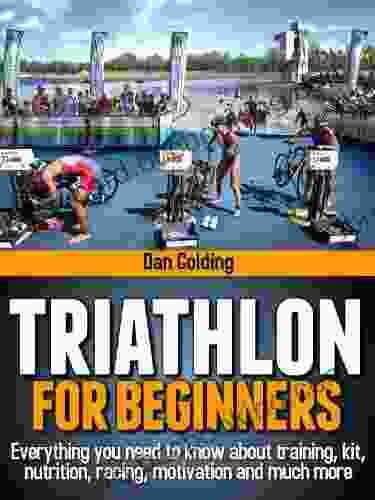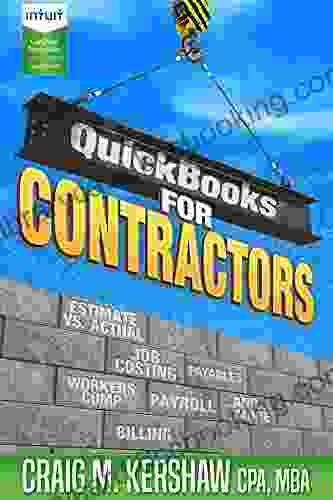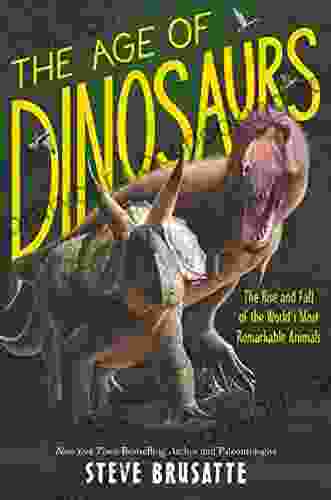Everything You Need to Know About Training, Nutrition, Kit, Motivation, and Racing

Are you ready to take your fitness to the next level? Whether you're a seasoned athlete or just starting out, this comprehensive guide will provide you with everything you need to know to achieve your goals. We'll cover everything from training and nutrition to kit and motivation, so you can be confident that you're on the right track.
4.4 out of 5
| Language | : | English |
| File size | : | 1328 KB |
| Text-to-Speech | : | Enabled |
| Screen Reader | : | Supported |
| Enhanced typesetting | : | Enabled |
| Word Wise | : | Enabled |
| Print length | : | 212 pages |
| Lending | : | Enabled |
Chapter 1: Training
Training is the foundation of any successful fitness program. In this chapter, we'll discuss the different types of training, how to create a training plan, and how to progress safely and effectively. We'll also provide tips on how to stay motivated and avoid injuries.
Types of Training
There are many different types of training, each with its own benefits. Some of the most common types of training include:
- Endurance training: This type of training improves your cardiovascular fitness and stamina. It can be done through activities such as running, cycling, and swimming.
- Strength training: This type of training helps you build muscle and strength. It can be done through activities such as weightlifting and bodyweight exercises.
- Speed training: This type of training improves your speed and power. It can be done through activities such as sprinting and plyometric exercises.
- Flexibility training: This type of training improves your range of motion and flexibility. It can be done through activities such as yoga and stretching.
Creating a Training Plan
Once you know the different types of training, you can start to create a training plan. Your training plan should be tailored to your individual goals and fitness level. Here are a few things to consider when creating a training plan:
- Your goals: What are you trying to achieve with your training? Are you looking to improve your endurance, strength, speed, flexibility, or a combination of these?
- Your fitness level: How fit are you currently? If you're new to exercise, you'll need to start with a gradual training plan. If you're more experienced, you can start with a more challenging plan.
- Your time constraints: How much time do you have to dedicate to training? If you're short on time, you may need to choose a training plan that can be done in a shorter amount of time.
Progressing Safely and Effectively
Once you have a training plan, it's important to progress safely and effectively. Here are a few tips for progressing your training:
- Gradually increase your training volume and intensity: Don't try to do too much too soon. Start with a manageable training load and gradually increase the volume and intensity of your workouts over time.
- Listen to your body: If you're feeling tired or sore, take a rest day. Don't push yourself too hard, or you could risk injury.
- Be patient: Fitness takes time. Don't get discouraged if you don't see results immediately. Just keep at it and you will eventually reach your goals.
Chapter 2: Nutrition
Nutrition is just as important as training when it comes to achieving your fitness goals. Your diet provides your body with the fuel it needs to perform at its best. In this chapter, we'll discuss the basics of nutrition, including what to eat, when to eat, and how much to eat. We'll also provide tips on how to make healthy choices and avoid unhealthy temptations.
What to Eat
A healthy diet should include a variety of foods from all food groups. The following are some of the most important food groups:
- Fruits and vegetables: Fruits and vegetables are packed with vitamins, minerals, and antioxidants. They are essential for good health and can help reduce your risk of chronic diseases such as heart disease and cancer.
- Whole grains: Whole grains are a good source of fiber, which is important for digestive health. They can also help you feel full and satisfied, which can help you maintain a healthy weight.
- Lean protein: Lean protein is essential for building and repairing muscle tissue. It can be found in foods such as chicken, fish, beans, and tofu.
- Healthy fats: Healthy fats are essential for hormone production and brain function. They can be found in foods such as avocados, nuts, seeds, and olive oil.
When to Eat
When you eat is just as important as what you eat. Eating regular meals and snacks throughout the day can help you maintain a healthy blood sugar level and avoid energy crashes. It can also help you control your appetite and make healthier choices.
How Much to Eat
The amount of food you need to eat each day depends on a number of factors, including your age, activity level, and goals. If you're not sure how much to eat, talk to a registered dietitian or other qualified healthcare professional.
Chapter 3: Kit
The right kit can make a big difference in your performance and comfort. In this chapter, we'll discuss the essential pieces of kit for training and racing, including clothing, footwear, and accessories. We'll also provide tips on how to choose the right kit for your needs.
Clothing
When choosing clothing for training and racing, it's important to choose items that are comfortable, breathable, and moisture-wicking. You may also want to consider items that are designed for specific weather conditions.
- Base layer: A base layer is a thin, tight-fitting garment that wicks sweat away from your skin. Base layers can help keep you warm in cold weather and cool in warm weather.
- Mid layer: A mid layer is a garment that provides insulation. Mid layers can be made from a variety of materials, such as fleece, wool, or synthetic fibers.
- Outer layer: An outer layer is a garment that protects you from the elements. Outer layers can be made from a variety of materials, such as waterproof nylon, breathable Gore-Tex, or windproof softshell.
Footwear
Choosing the right footwear is essential for both training and racing. Make sure to choose shoes that are comfortable, supportive, and designed for your specific activity. For example, if you're a runner, you'll need to choose running shoes that are designed to provide cushioning and support for your feet.
Accessories
There are a number of accessories that can be useful for training and racing, such as hats, gloves, sunglasses, and hydration packs. Choose accessories that are comfortable and designed for your specific needs.
Chapter 4: Motivation
Motivation is essential for achieving any goal, and fitness is no exception. In this chapter, we'll discuss the importance of motivation and provide tips on how to stay motivated. We'll also discuss common challenges to motivation and how to overcome them.
The Importance of Motivation
Motivation is what drives you to take action and achieve your goals. Without motivation, it's easy to give up when things get tough. Motivation can come from internal factors, such as your values and beliefs, or external factors, such as your friends, family, or coach.
How to Stay Motivated
There are a number of things you can do to stay motivated, including:
- Set realistic goals: If your goals are too ambitious, you're more likely to get discouraged and give up. Set goals that are challenging but achievable.
- Break down your goals into smaller steps: This can make your goals seem less daunting and more manageable.
4.4 out of 5
| Language | : | English |
| File size | : | 1328 KB |
| Text-to-Speech | : | Enabled |
| Screen Reader | : | Supported |
| Enhanced typesetting | : | Enabled |
| Word Wise | : | Enabled |
| Print length | : | 212 pages |
| Lending | : | Enabled |
Do you want to contribute by writing guest posts on this blog?
Please contact us and send us a resume of previous articles that you have written.
 Book
Book Novel
Novel Page
Page Chapter
Chapter Text
Text Story
Story Genre
Genre Reader
Reader Library
Library Paperback
Paperback E-book
E-book Magazine
Magazine Newspaper
Newspaper Paragraph
Paragraph Sentence
Sentence Bookmark
Bookmark Shelf
Shelf Glossary
Glossary Bibliography
Bibliography Foreword
Foreword Preface
Preface Synopsis
Synopsis Annotation
Annotation Footnote
Footnote Manuscript
Manuscript Scroll
Scroll Codex
Codex Tome
Tome Bestseller
Bestseller Classics
Classics Library card
Library card Narrative
Narrative Biography
Biography Autobiography
Autobiography Memoir
Memoir Reference
Reference Encyclopedia
Encyclopedia Dan Southerland
Dan Southerland Claudia Rankine
Claudia Rankine Cynthia Gabriel
Cynthia Gabriel Daniel Farcas
Daniel Farcas Dana Richardson
Dana Richardson Claire L Evans
Claire L Evans Cynthia Newcomer Daniel
Cynthia Newcomer Daniel Dan Mishkin
Dan Mishkin Craig Wear
Craig Wear Dan Cryan
Dan Cryan Daniel Berke
Daniel Berke Dan Richer
Dan Richer Critical Role
Critical Role Dale Brown
Dale Brown Connie Roop
Connie Roop Dan Moren
Dan Moren Craig Lambert
Craig Lambert Clint Smith
Clint Smith Dan Branagan
Dan Branagan Craig A Falconer
Craig A Falconer
Light bulbAdvertise smarter! Our strategic ad space ensures maximum exposure. Reserve your spot today!

 Alan TurnerAce Your USMLE Step CK Exam with Master the Boards USMLE Step CK 6th Ed.: A...
Alan TurnerAce Your USMLE Step CK Exam with Master the Boards USMLE Step CK 6th Ed.: A...
 Donovan CarterAn Epic Journey Through Time and Betrayal: Discover the Enthralling Novel...
Donovan CarterAn Epic Journey Through Time and Betrayal: Discover the Enthralling Novel... Walt WhitmanFollow ·11.2k
Walt WhitmanFollow ·11.2k Anton ChekhovFollow ·2.7k
Anton ChekhovFollow ·2.7k Derek CookFollow ·8.8k
Derek CookFollow ·8.8k Cole PowellFollow ·19.7k
Cole PowellFollow ·19.7k Kevin TurnerFollow ·10.8k
Kevin TurnerFollow ·10.8k Billy FosterFollow ·17.9k
Billy FosterFollow ·17.9k Dan BrownFollow ·11.7k
Dan BrownFollow ·11.7k Robbie CarterFollow ·11.3k
Robbie CarterFollow ·11.3k

 Donald Ward
Donald WardVeteran Investment Advisor Reflects On Money
Unlocking Financial Wisdom...

 Fernando Pessoa
Fernando PessoaUnlock the Secrets of Value Investing with "University of...
In the realm of investing, there stands an...

 Jorge Luis Borges
Jorge Luis BorgesMaster Spanish Vocabulary with Ap Spanish Flashcards...
Are you eager to expand your Spanish...

 Roger Turner
Roger TurnerPlay Like a Pro: The Ultimate Guide to Becoming a Master...
Are you ready to...
4.4 out of 5
| Language | : | English |
| File size | : | 1328 KB |
| Text-to-Speech | : | Enabled |
| Screen Reader | : | Supported |
| Enhanced typesetting | : | Enabled |
| Word Wise | : | Enabled |
| Print length | : | 212 pages |
| Lending | : | Enabled |












